Bon jour
Parlez-vous français? Well, if you’re asking us – je parle un peu. And we’re right in the middle of Quebec where a little French comes in very handy. The good people of Quebec (Quebecois pronounce it without mentioning the ‘u’) seem to be caught in two worlds. For the most part they are seriously passionate about their French heritage and their French language, which is fair enough. Most support the separatist movement to become an independent country. But there’s more to it than that. Geographically Quebec is stuck right in the middle of the huge country of Anglo Canada with English speaking provinces all around them. While the rest of Canada goes to reasonable lengths to be officially bi-lingual and at least on the surface be inclusive of Quebec and all its people, it is clear once you enter Quebec that this province is single language and single minded about the issue.
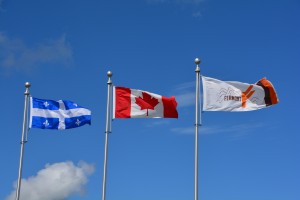
Our first sight in Quebec – their pretty blue and white flag and the local mining town’s flag flanking the maple leaf
We entered Quebec from the most unlikely place after the long northern journey on the Trans Labrador Highway and our first town was the mining community of Fremont. Suddenly we were dropped into a new world with all signs only in French and most people speaking only a poor spattering of English. Fremont is a fascinating community, existing in these remote northern parts solely because of the monster-huge iron ore mining enterprise nearby. The town has 2,500 people, of which over 1,000 work for in the mines and the rest are family or support teams.
The town is designed with the express purpose to cope with the horrible winter weather where temperatures can crop to minus 45 degrees and strong winds that will literally blow you away. To partly cope with these extreme conditions they have built one huge building which is shaped like a bent elbow and is 1.3 kilometres long by four stories high.
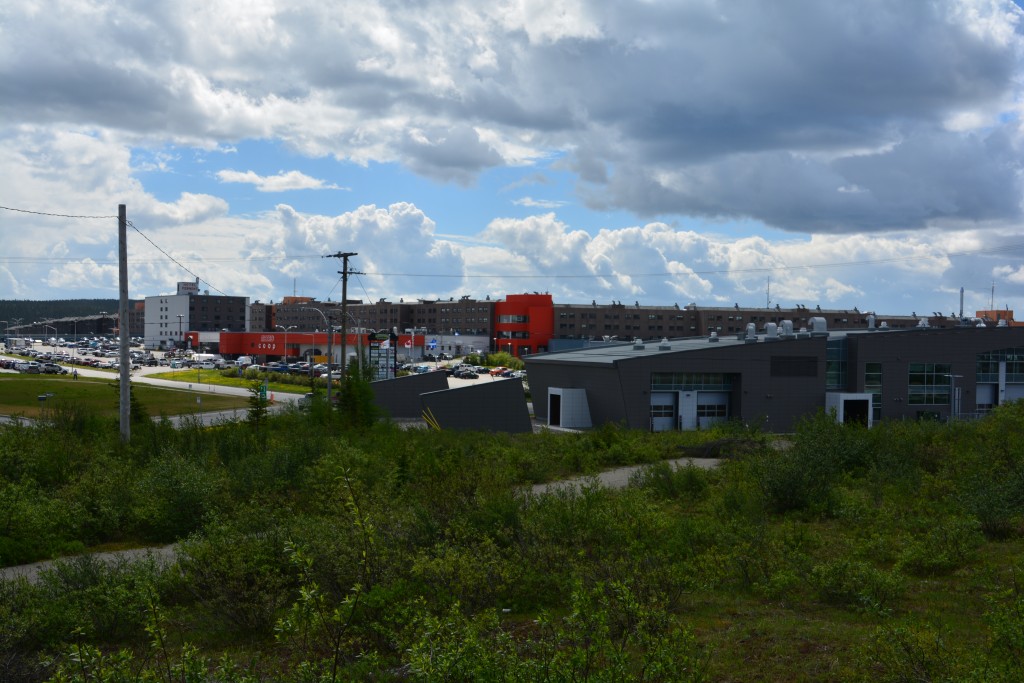
Not the best photo but you can pick out The Wall with its bright orange tower- a building over one kilometre long that acts as a shield for the rest of the residential buildings
This featureless and colourless structure has almost everything the citizens of Fremont need, including all shops, stores, food, hairdressers, Olympic swimming pool, gym, library, schools, hotel, restaurants and 350 apartments. It is lovingly called The Wall by the locals because its other purpose is to act as a wind break for the other bland residential complexes that are nestled inside the bent elbow. There is no colour, no flair, no signs or any indication that people have individual needs or tastes but it is warm and highly functional, if not a little depressing.
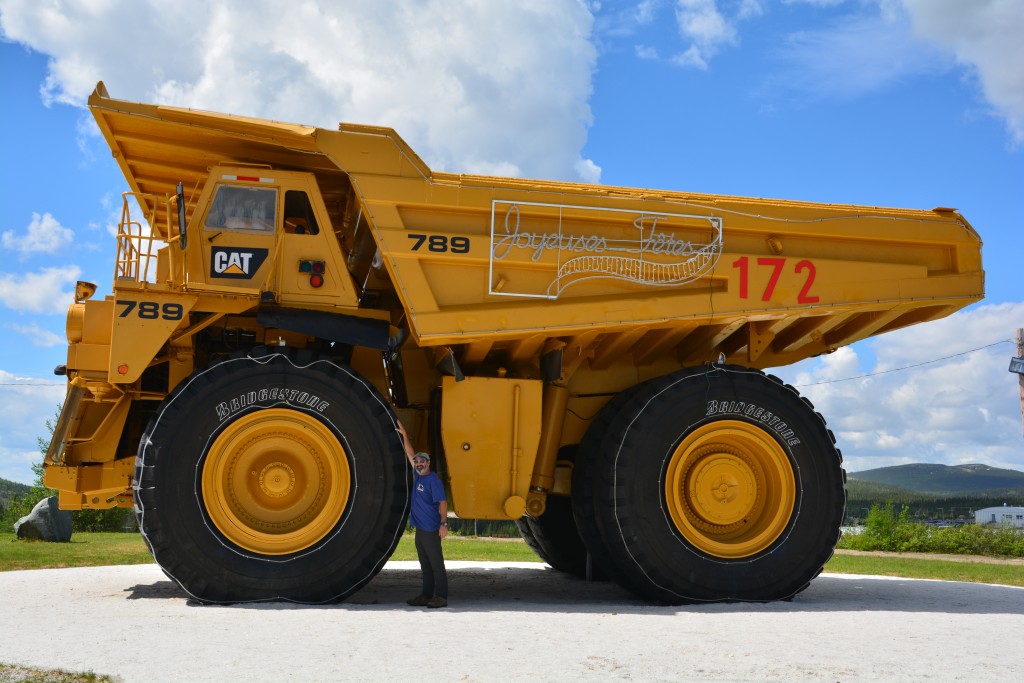
The mining business is big in these parts and they use big – really big – trucks to get the job done
We headed south on Hwy 389, past the scary-big iron ore mining complex, along wide dirt roads that weaved their way up, over and around the various hills and mountains of the region. We skirted past beautiful mountain lakes, across fast moving streams and passed through endless black spruce forests that were impenetrably thick and somewhat foreboding.
At one stage we passed through the ghost town of Gagnon which was abandoned in 1985 when the local mine closed down and all buildings were demolished and removed. At another point we passed the fifth largest meteorite crater in the world, now a reservoir that powers the massive Manic Cinq hydroelectric dam. It was a beautiful and more varied drive than the day before and we found a great little bush camp tucked away under the massive power lines from the giant hydro dam. The nasty biting and sucking black flies, the only true villain of this beautiful land, were out in full force and drove us to distraction.
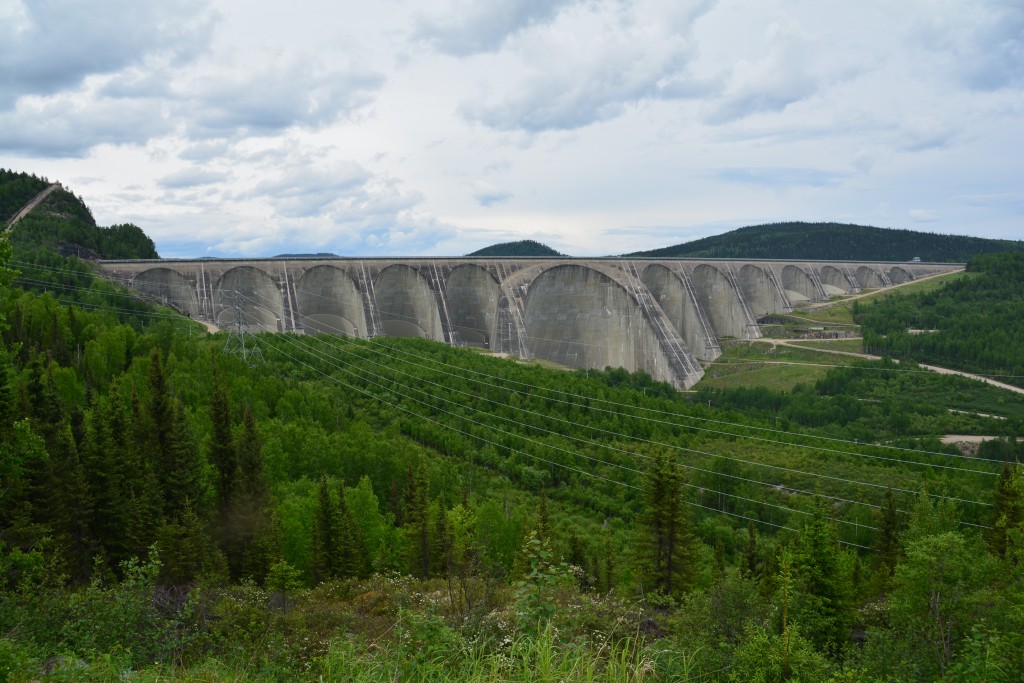
Also big around here is the hydro industry – this is one of five huge dams we passed in a single day
The Gulf of St. Lawrence is an enormous body of water that runs north east and basically connects the Great Lakes to the Atlantic Ocean. It has been a vital waterway for exploration, trade and commerce for more than 500 years and features some beautiful places along its shores. We finally reached the gulf and with that we put the vast untamed northern parts of Quebec and Labrador behind us and with some regret returned to ‘civilisation’.
We hit the cute little touristy town of Tadoussac which sits at the mouth of the huge Saguenay Fjord as it pours into the Gulf of St. Lawrence. We tried to spot whales that feed on the krill that thrive in the warmer river waters, then drove upstream along the deep fjord with its high vertical walls dropping straight into the dark water. We now understood why many Quebecois regard the Saguenay Fjord as the most beautiful part of their province.
The next day we pushed on to Lac St. Jean, a lake stretching beyond the horizon surrounded in forest green mountains that provides the fresh water for the Saguenay Fjord and those whale eating krill. We stopped at a few small communities on the lake’s shore, most just acting as a service industry for visitors to this popular setting. We followed the lake’s southern shoreline until it’s far western point and then branched off northwest on a lonely highway into the vast northern reaches of central Quebec.
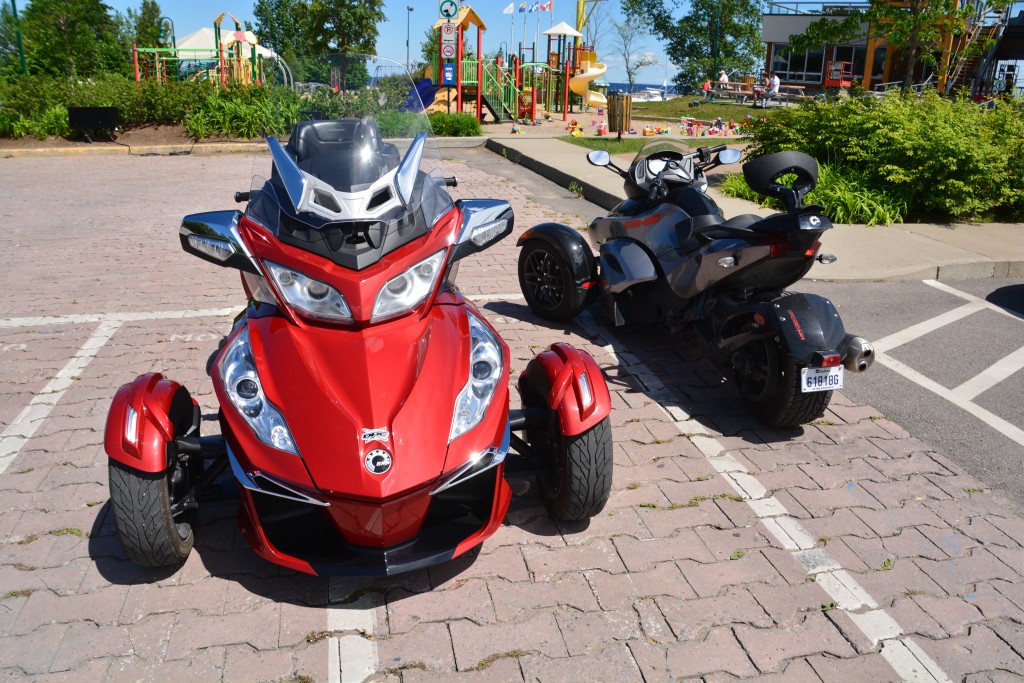
These are pretty cool – three wheeled motorcycles with the two wheels in the front whereas in the US they were mostly in the back
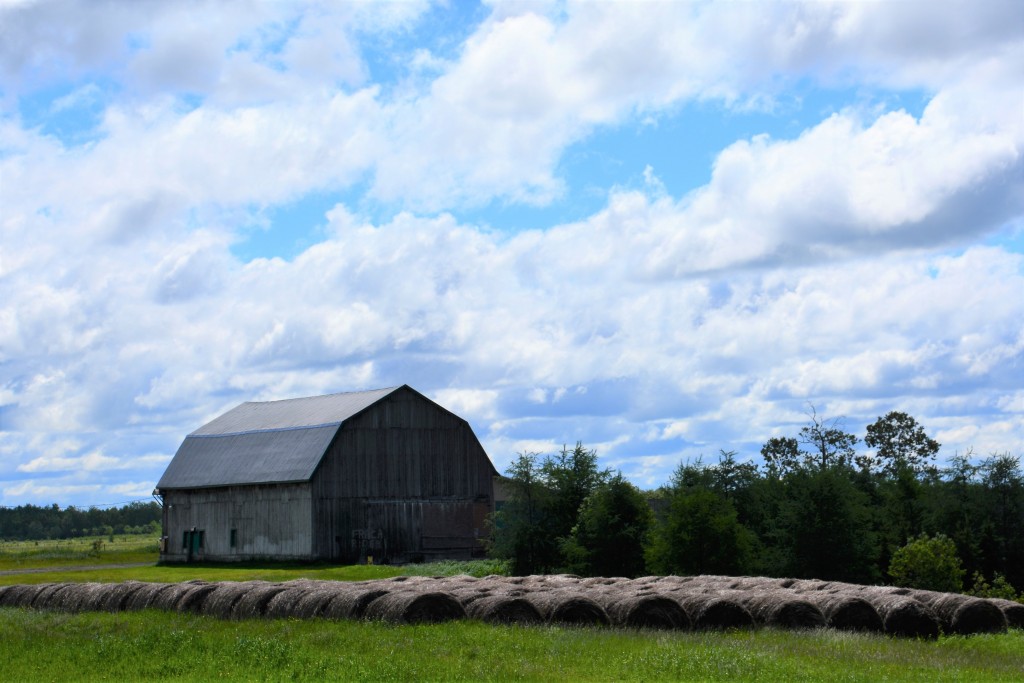
We reached more farming areas around the lake and went through a phase of photographing beautiful old barns
Our touch with civilisation lasted for less than 24 hours but allowed us to shower, re-supply, re-fuel and touch base with the outside world. After nine days in remote parts of Newfoundland, Labrador and northern Quebec and one day amongst the masses we headed back into the bush, finding a stunning camp on the shores of Lac Charron above the 49th parallel. It was only us, the beautiful calm lake and a zillion blood sucking insects. Paradise!
Quebec is a huge province, starting at their heralded cities of Quebec and Montreal on the shores of the Great Lakes and reaching all the way to the frozen arctic. The northern stretches of central Quebec are much like what we’ve seen to the east and into Labrador. The thick boreal forest, mainly the tall spindly black spruce, dotted with beautiful mountain lakes and criss-crossed with endless snow-melt streams provide a beautiful – if not repetitive – scene. We drove north to the mining community of Chibumagau and finally found a remote northern town with character, modern facilities and a centre ville with some colour and life.
We then followed the only road south and westward, through a string of small indigenous communities which could have benefited from some love and attention, around more blue lakes and across more babbling brooks until we finally made one of Quebec’s major towns on its western border, Val d’Or. Here we learned it was National Quebec Day, an oddity since Quebec is not a nation (much like how Quebec calls their provincial parks national parks because they don’t want to admit they’re actually a province of Canada) and camped in a local regional park amongst the trees and hundreds of celebrating French Canadians.
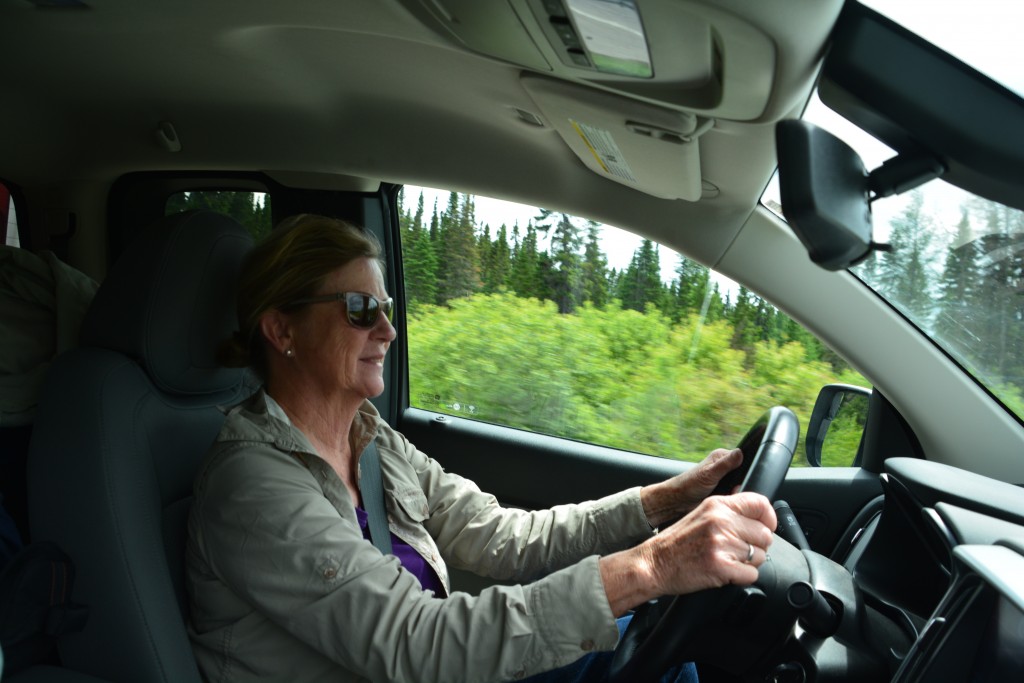
There’s been a coup! Julie and Tramp teamed up for an afternoon of driving across the far reaches of northern Quebec
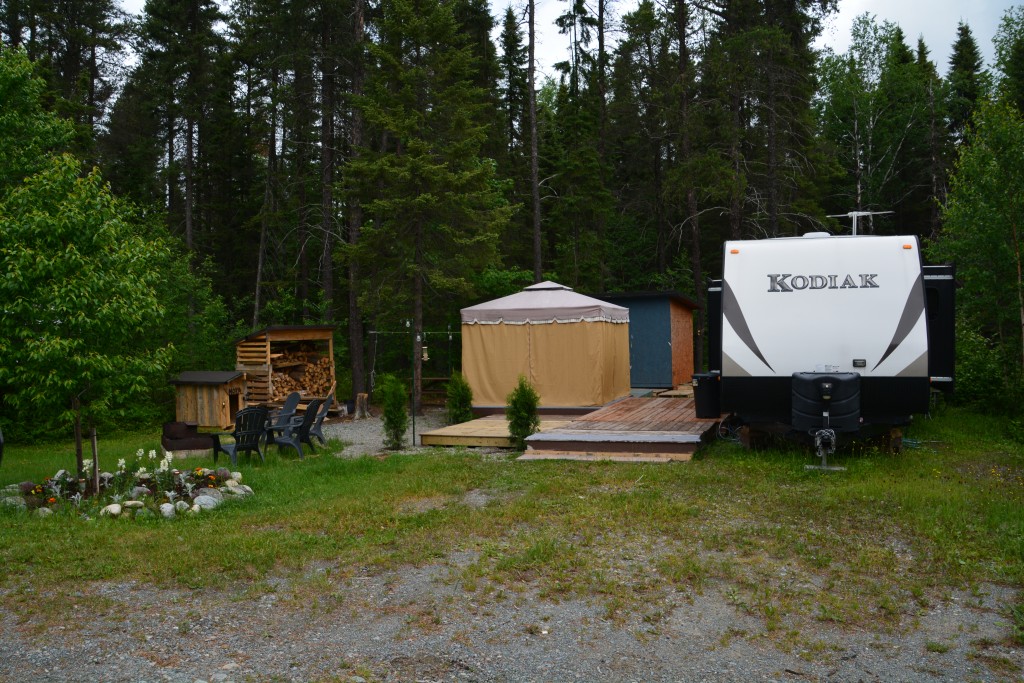
We stayed in a regional park one night for showers and found Quebecois took stagnant camping seriously, including bug tents, wood shelters and a storage shed
The next day we tried to move west but found the impressive Parc national d’Aiguebelle which featured a deep fault line crack in the earth’s surface that filled with beautiful fjord-like lakes. We did a three kilometre walk along the lake’s shoreline and crossed the high suspension bridge across the gorge, giving us great views in both directions. We had a striped snake cross our path and a large black bear amble across the road in front of us. We also met a couple from Canberra on the walk…those damn Aussies are everywhere!
Today was also our 100th day on the road since we left our home base of Salinas California. It was fitting to have this day in Quebec – a semi-foreign country, full of new learnings and surprises, a great experience. We have had many fabulous experiences since we left California in early March and we are looking forward to many more in the future. To the next 100 days…and more!
But eventually, and with some regret, we made our way out of Quebec and found a quiet little bush camp on the Ontario side of the border. Like many legs of this journey, we learned more than we expected during our time in this unique province. We were amazed by how ‘French’ the Quebecois are, even driving like the French, and we gained a better insight into their quest to become a separate nation, which we grew some sympathy for. We also know that we skirted the northern most drivable land of this huge province and there is much more to explore in the more populous southern section. Perhaps for another time. In the meantime, we say adieu and au revoir.
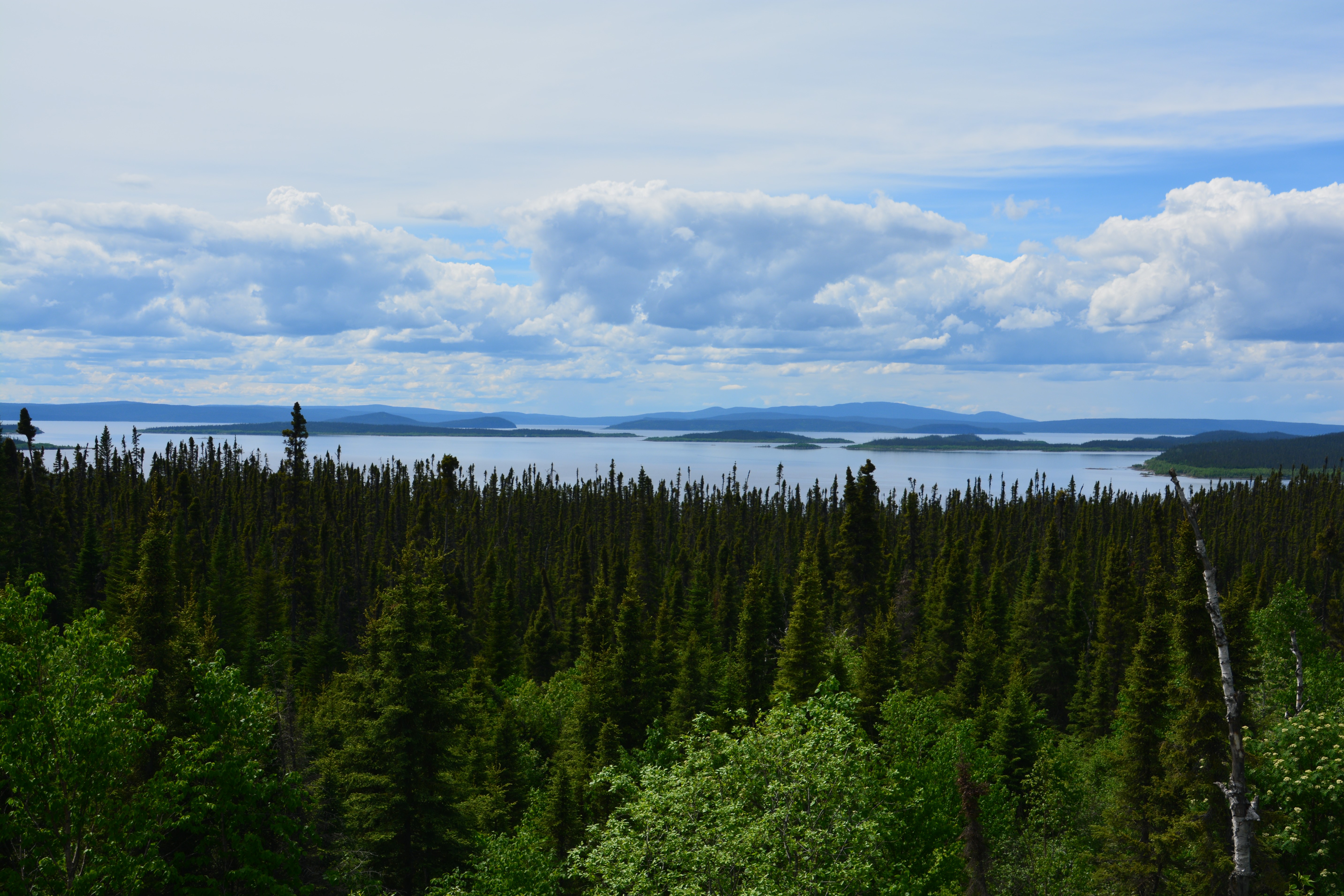
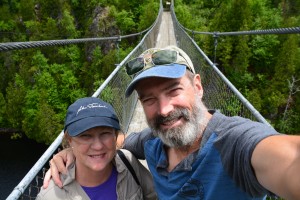
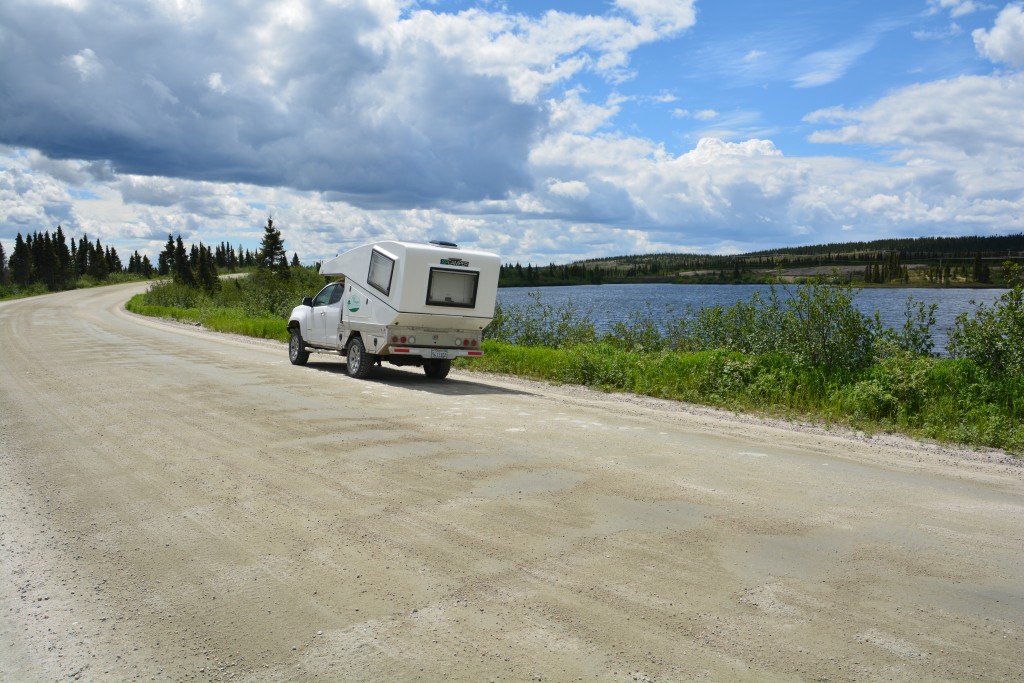
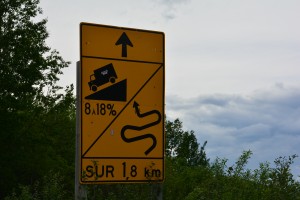
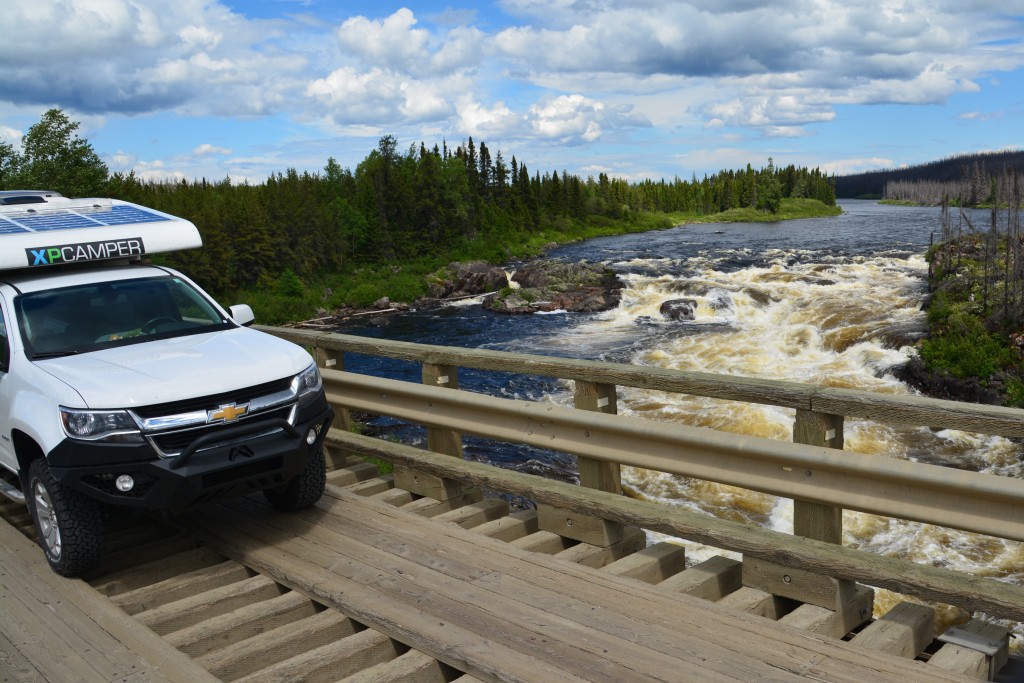
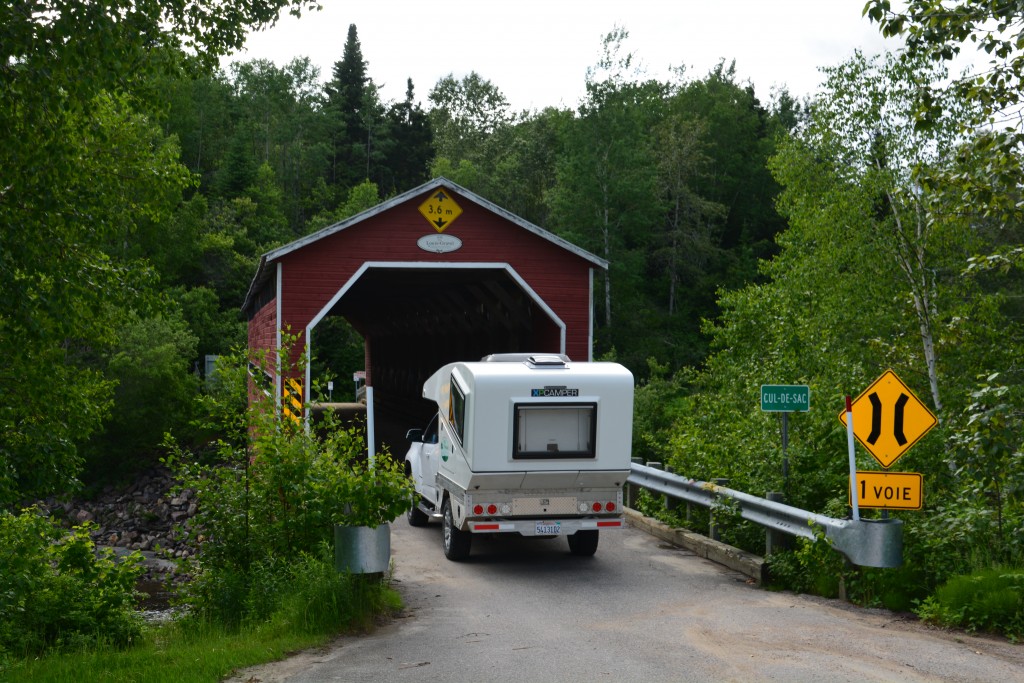
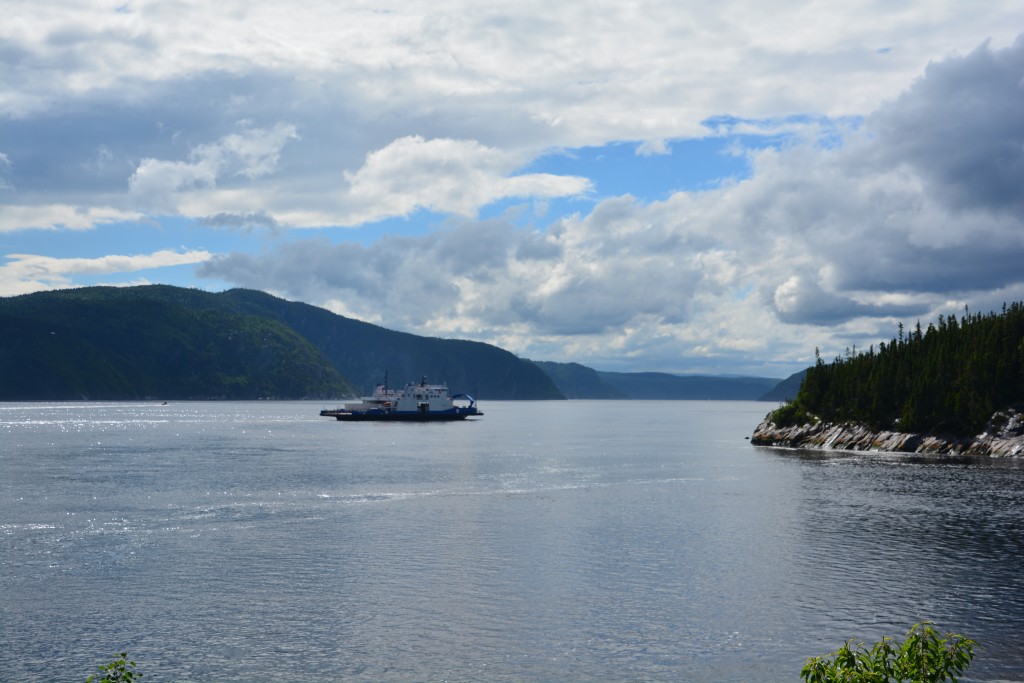
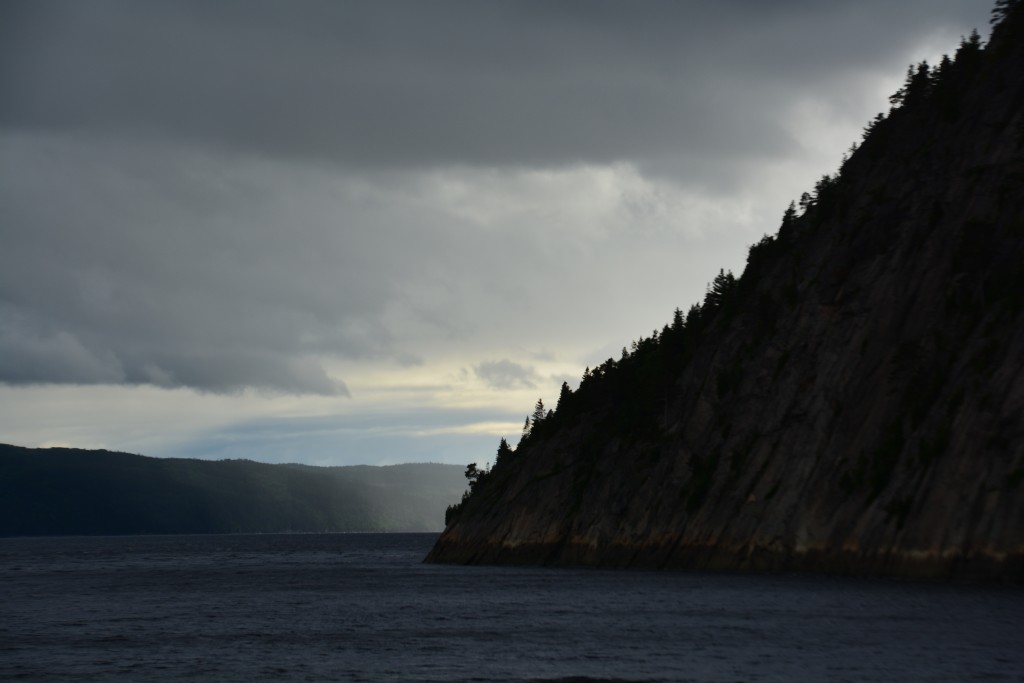
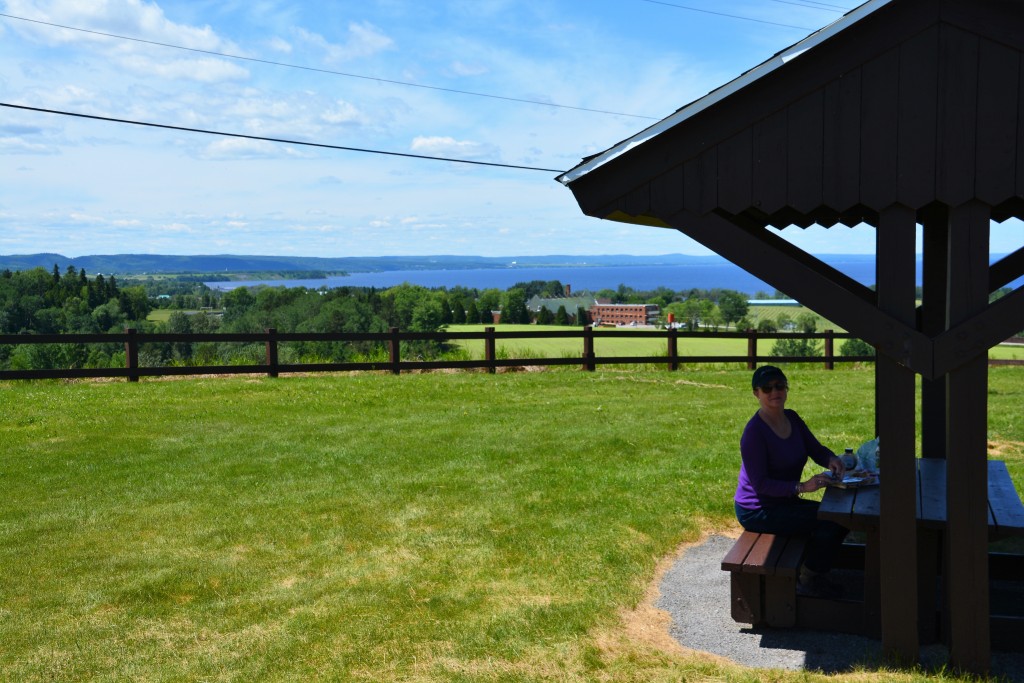
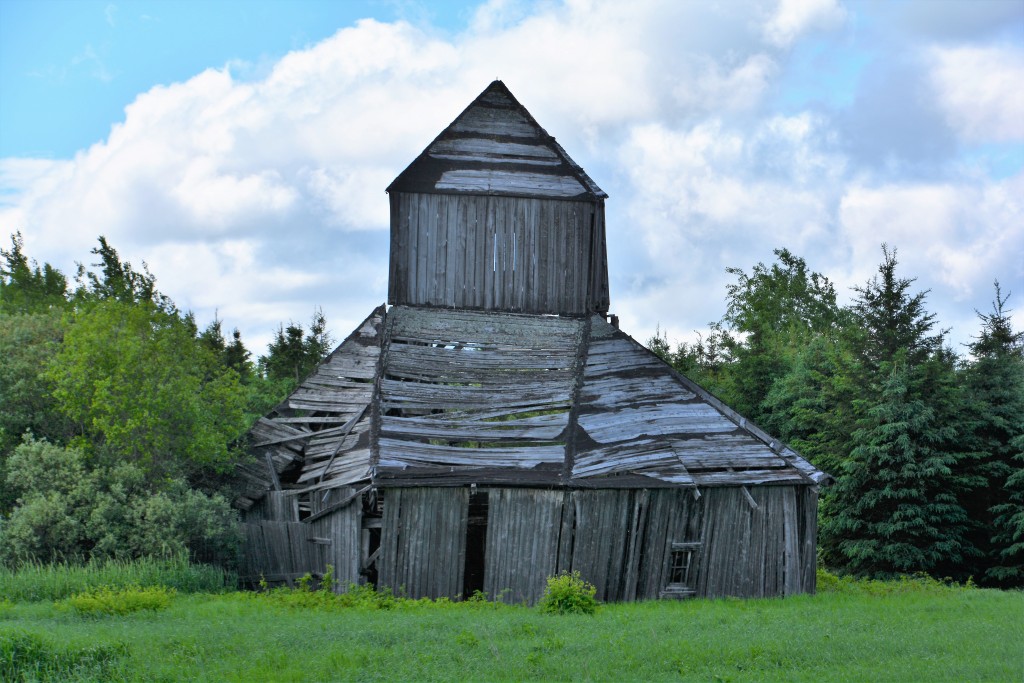
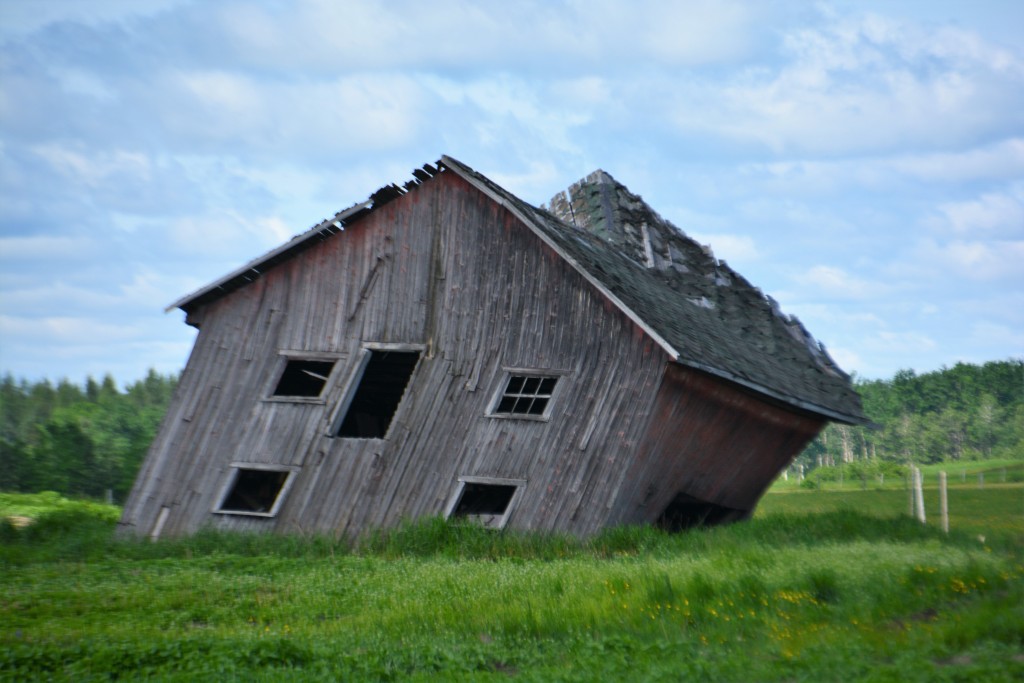
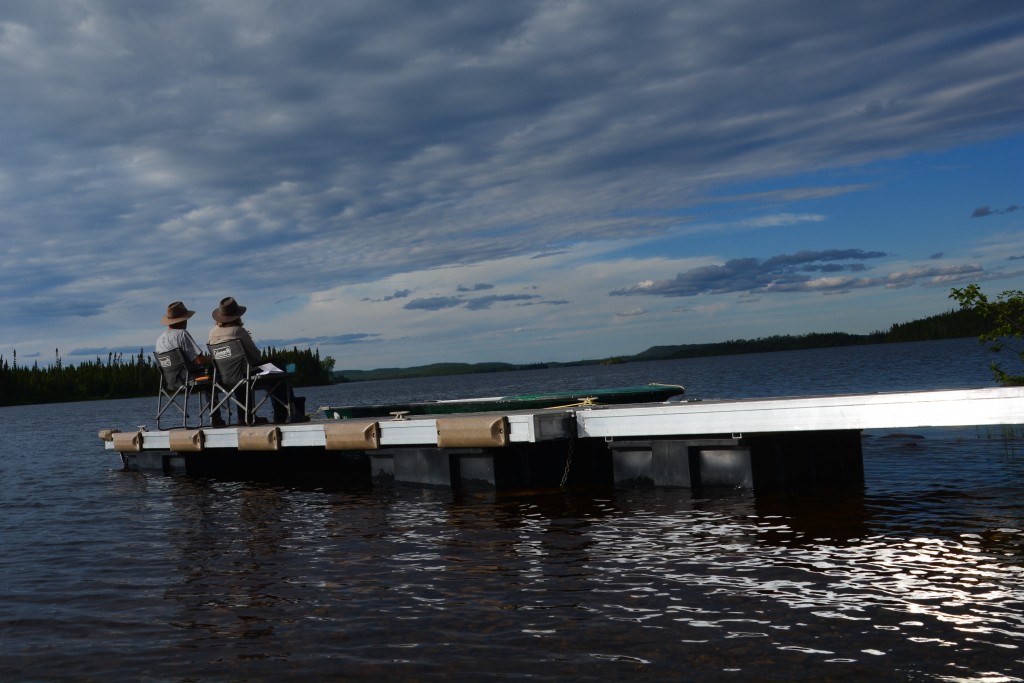
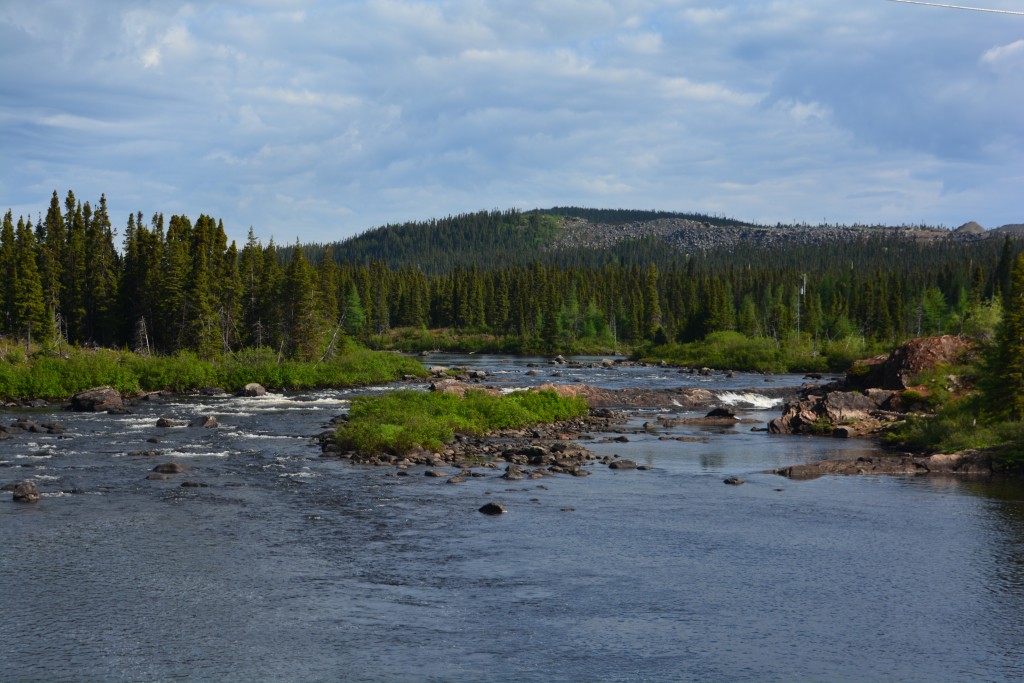
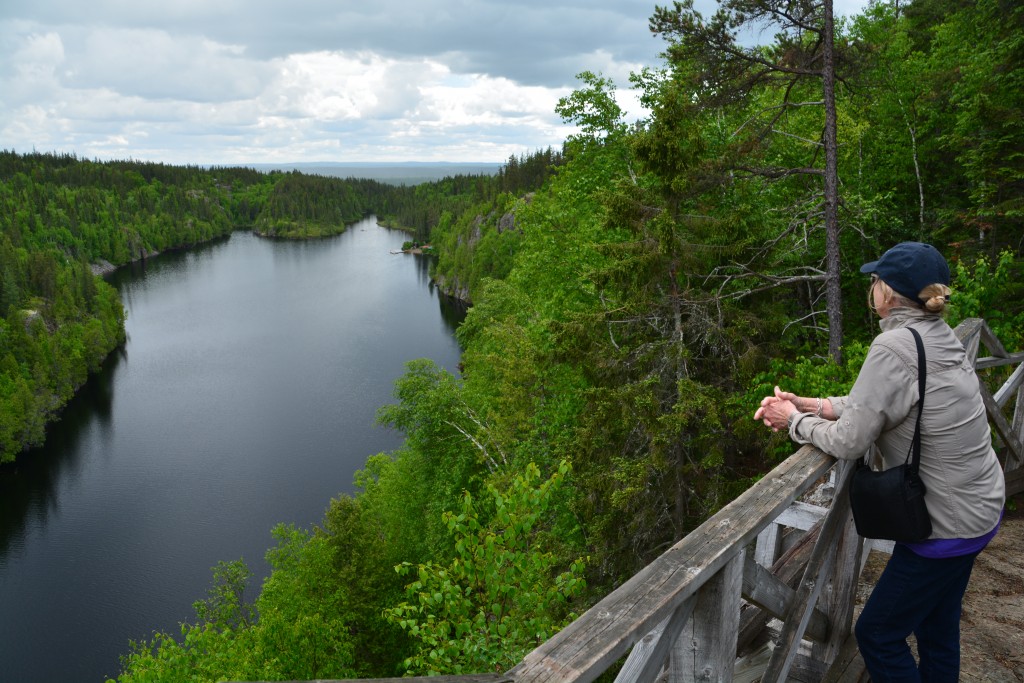
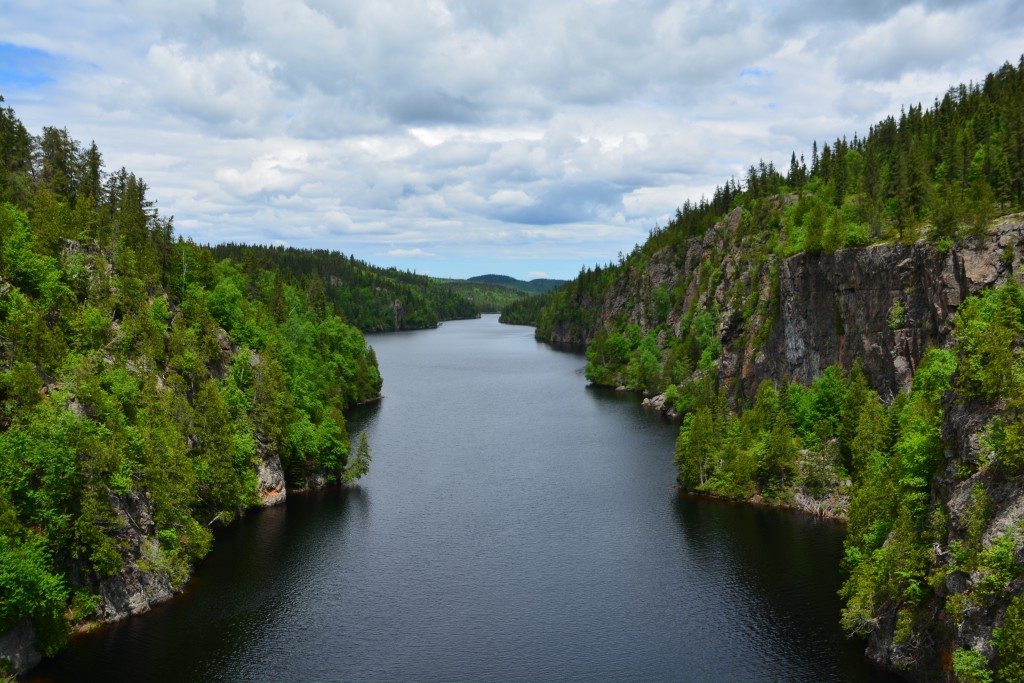
Comments
Bon jour — No Comments
HTML tags allowed in your comment: <a href="" title=""> <abbr title=""> <acronym title=""> <b> <blockquote cite=""> <cite> <code> <del datetime=""> <em> <i> <q cite=""> <s> <strike> <strong>